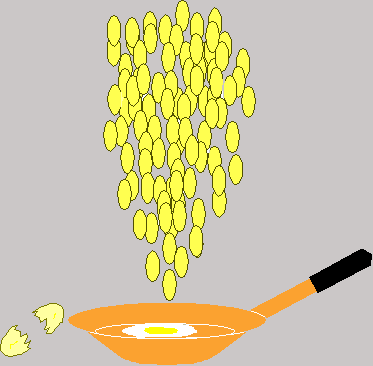 It may seem that such a large number is of little use in everyday life (certainly, it is a lot of eggs). However, the mole is defined as the number of atoms in exactly 12 grams of Carbon-12.
It may seem that such a large number is of little use in everyday life (certainly, it is a lot of eggs). However, the mole is defined as the number of atoms in exactly 12 grams of Carbon-12.
 Up to Discrete Quantities
Up to Discrete Quantities
Despite what it sounds like, the mole is not a character from a Robert Ludlum espionage novel. Rather, it is a quantity that can be used the same way as we regularly use the word dozen. However, one mole is much larger than one dozen, so we don't have as much chance to use it in everyday conversation.
This is a BIG number. To put this into some perspective: Scientists have dated the Earth as approximately 4.5 x 10^9 years old. This is about 1.4 x 10^17 seconds. So the Earth is not even one mole seconds old!!
(NOTE: Actually, the mole is not exactly equal to the above number. Its definition is a little more complicated than that. Later on, you will see a precise definition of the mole.)
 It may seem that such a large number is of little use in everyday life (certainly, it is a lot of eggs). However, the mole is defined as the number of atoms in exactly 12 grams of Carbon-12.
It may seem that such a large number is of little use in everyday life (certainly, it is a lot of eggs). However, the mole is defined as the number of atoms in exactly 12 grams of Carbon-12.
This number, which has been determined by many ingenious experiments, is called
The mole is commonly used by chemists to measure the amount of a substance, as in "when two moles of hydrogen react with one mole of oxygen ...".
 On to S.I. units
On to S.I. units
 Table of Contents
Table of Contents